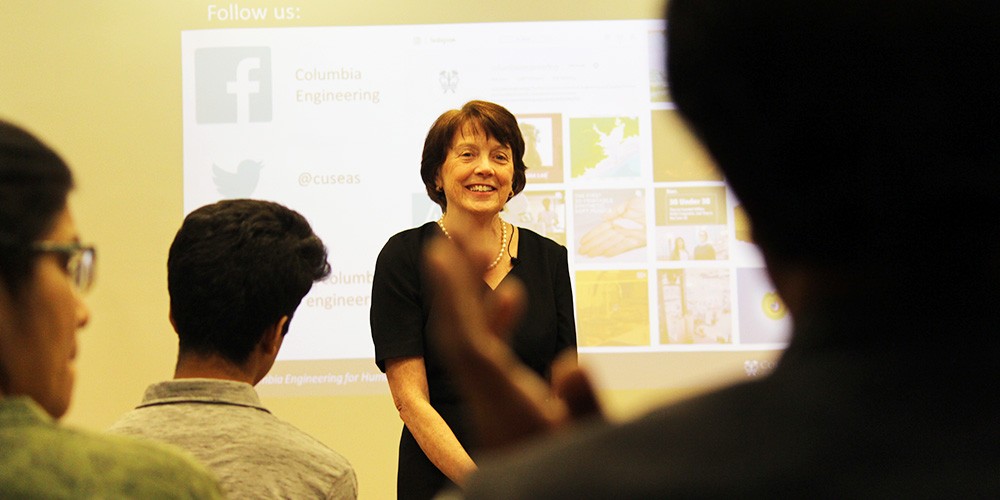Columbia Engineering for Humanity

In November, Mary C. Boyce, Dean of the Fu Foundation School of Engineering and Applied Science at Columbia University visited India to share the School’s new strategic vision, Columbia Engineering for Humanity. “This vision is a collective vision, where we feel we are as engineers at Columbia. It’s a very powerful school with over 1,600 undergraduates and over 2,600 graduate students,” she said. The greatest percentage of Columbia alumni in India comes from the school of engineering.
Speaking at Columbia Global Centers | Mumbai and at the Taj West End in Bengaluru before that, Boyce, who is also the Morris A. and Alma Schapiro Professor of Engineering at Columbia, gave the audience an overview of some of the elements of the school of engineering, where they are seeking to have impact and some examples of what they’re doing in all of these areas of impact. Specifically highlighting the genesis of the School’s new vision, which reflects a strong commitment to both technical innovation and community impact, she said, “We did a lot of sampling of where do we have strengths, where are we having impacts and where we aspire to have even greater impact with our engineering education and research. What came back is a list of global challenges – creativity and innovation, risk and security, communication and information, health and wellness, and sustainability and resilience.”
This very closely paralleled Maslow’s hierarchy of needs – usually depicted as a five tier pyramid of what we need to be fulfilled as a human being. “But, we realized that this isn’t really a pyramid; it is an interconnected set of challenges. So, we converted it to a more circular framework. If I do something to address air pollution in India, I’m also going to impact human health,” explained Boyce. And that is how the School arrived at the five elements of Columbia Engineering for Humanity – Sustainability, Health, Security, Connectivity, and Creativity.
Looking at just one of those elements, for example Healthy Humanity, one can see that the School is doing work from regenerative tissue engineering to imaging our brain, from bringing ultrasound to actually being a therapeutic device to using data science techniques to really understand how DNA analysis and genomics can give us information to change how we treat patients. “This sense of how we are enabling and propelling very cross disciplinary research, I think, is the real strength of Columbia Engineering,” explained Boyce.
On research and partnerships specifically with India, she stated, “We have a great commitment to innovation and how we translate research and ideas into real world practice. We see many faculty doing individual engagements with different universities, different organizations in India and it’s wonderful to now have a Global Center that can also facilitate even more of these.”